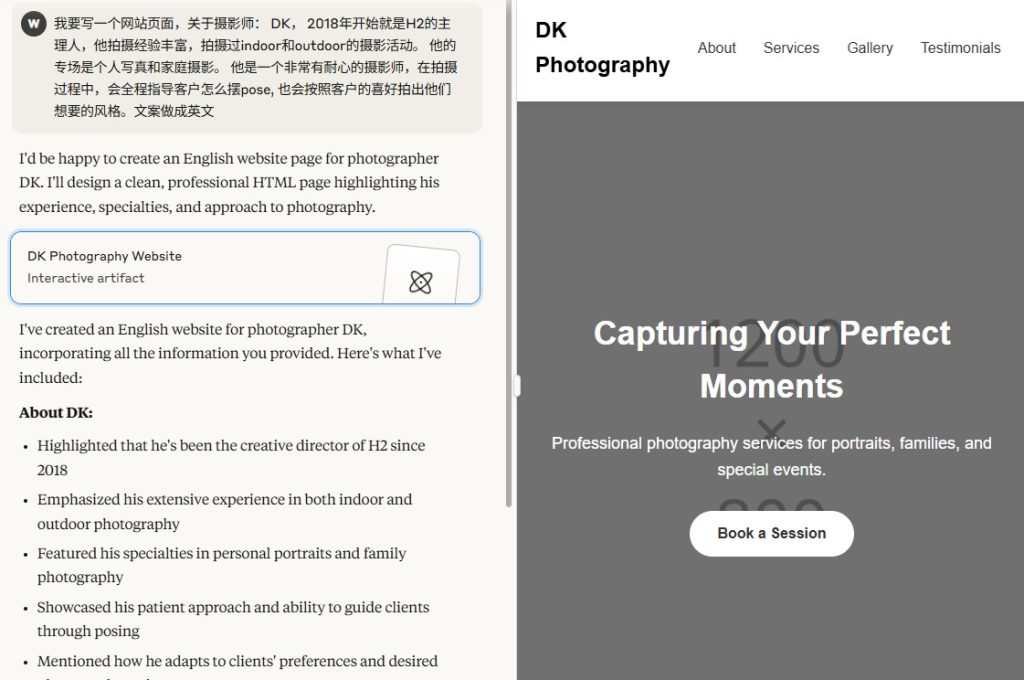If you have been in the SEO world for a while then you may have heard about Meta titles and their significance. The Meta title is an important website element that plays a big role in SEO. Many businesses and marketers strive to optimize their website’s Meta title correctly but fail. They try to stuff the Meta title with keywords and commercial queries all the time. This is a bad practice that Google hates.
Thus, it is very important to optimize the Meta title in a way that brings maximum SEO results for your website. In this article, you will learn great things about Meta title and how to optimize it. Also, I will show you some insightful data that will help you see what does work best with Meta title and what doesn’t.
The Meta title is an integral part of a website so you must pay proper attention to optimize it. I understand it is a lengthy and tough task to optimize the Meta title especially when you have hundreds of pages on your website. But believe me, it’s worth doing.
Meta Title – Important Part of SEO
Before getting to the optimization of Meta title, let’s first understand Meta title and its anatomy. The reason to show it here is to help you understand the fundamental of Meta title well. If you know the inside and out of Meta title then you can optimize it well.
What is my Meta Title?
The Meta title is an HTML tag that denotes the title for a webpage. Title tags are shown on search engine result pages to user’s queries as a part of the search listing. The Title is clickable and by clicking on it a user can land on the webpage.
Apart from this Title tag also gets shown to users on different social media websites as a part of the snippet. The title tag helps users to get an idea of the webpage and it motivates them to click on it if optimized correctly.
Syntax of the Title tag
<head>
<title>Hey, I am a Meta Title Tag Example.</title>
</head>
Why the Title tag is Important?
There are several reasons that show the importance of title tags but here let’s talk about three primary reasons.
-
The First impression is the last impression:
You may have heard this phrase many times before and perhaps you agree with it. The phrase is very true for the title tag as well.
Your web page’s title tag is the very first thing a visitor will see when he searches something on Google or other search engines. That means this is an important chance for you to make a positive first impression.
With a correctly written and nicely optimized title, you can successfully grab the attention of users and make them come to your website.
-
People Trust Brands
People recognize brands and trust them by frequently buying their products. When you show your brand name in the Title users can recognize your brand and you can attract them to come to your website.
-
Google checks the title
Google and other search engines like DuckDuckGo, Bing, Yahoo also check the title tag to get the idea about your webpage. Here you can take advantage of this thing by showing appropriate Title tags.
Now that you know the definition, syntax and importance of Title tag, it is time for you know about the ideal format of a title tag that search engines love.
Before that, let’s understand one basic thing that Google takes into account for showing Title tag, that basic thing is the limit of characters. Yes, Google shows the title tag up to a certain length and then truncate the title.
Here is an example:

In this example, you can see Google has truncated the title. After 50-60 characters Google starts trimming off title tags on search engine result pages. Google counts the character length by pixels and the ideal pixel length that gets shown by Google equals to 50-60 characters. Therefore, it is important to keep the title under the limit of 60 characters.
There are some tools available online; these tools can help you check the length of your titles both according to characters and pixels.
Above mentioned tools are great, you can use any of them to check the title width.
Caution: You should not write title tags in all-uppercase letters, it is a bad practice that Google doesn’t like and gives less ranking priority.
How to Craft Title Tags
Crafting a title tag is an art that you have to master if you want to achieve great SEO success. To master this art you need to ask some questions to yourself to get maximum SEO results.
Question #1: Am I writing the title tag for search engines or humans?
If you are writing the title tag for search engines then it will not benefit you. Those days are long gone when writing for search engines used to work. In today’s world, it is most vital to write the title tag for humans. If humans can understand your titles easily then they will more likely to click on the title and eventually, it will drive traffic to your webpage.
Question #2: Do I have title tags for every page on my website?
If you don’t have title tags on all the web-pages of your website then you should. I know it is time-consuming and effort taking task but it is necessary to perform.
For example, if one of your pages start to rank well for a particular query on Google but a greatly crafted title tag is not present on the page then what user will see, randomly generated title tag from the first paragraph (Most likely). This will not entice users to click on the title and they will pass your result and move to another one. You can see, not having a proper title on the page will cost you a lot. You definitely don’t want that, right!
Question #2: Do I have a unique title tag on every page of my website?
The most common negative thing that websites have is not having a unique title tag on every page. This issue may seem small when looking from the surface but it can deeply hurt your SEO. Not having a unique title on every page simply means that you have duplicate (partially or fully) title tags on web pages.
More often, your website CMS creates arbitrary title tags for multiple pages that are often duplicate. Also, if you use a plugin or tool for SEO optimization like Yoast SEO then such tools create titles based on pre-defined tags. These tags fetch information from web pages and generate same title tags for numerous pages.
A situation where you have duplicate Meta title on your website can severely affect your whole website’s SEO. You definitely don’t want that, right! So, make sure you place a unique title tag on each page to get maximum SEO results.
Since you have gone through the questions and got the satisfactory answers, let’s move to next part of crafting a good Meta title tag.
Before I show you how to create a great Meta title let’s look at some of the old ways of creating Meta titles what worked perfectly 5-6 years ago but these techniques don’t work anymore.
The reason I am showing it here is to tell you how the new ways and old ways of creating Meta title tags are different and why you should avoid the old ways.
Old techniques of creating Meta Title (Avoid them)
Old Technique 1: Your Main Keyword – Secondary Keyword | Your Brand Name
This format includes two keywords, a primary keyword and secondary keyword accompanied by the brand name. However, this format doesn’t always give you the freedom to optimize the Title tag efficiently for the users. This format isn’t descriptive enough to let users know what you want to tell about your webpage.
For example, you write an article titled “10 Amazing Methods for Singaporean Business to Improve SEO”. Now you create the title tag using the above method that includes primary and secondary keywords and brand name. Here is how it will look:
SEO Singapore – SEO Services in Singapore | ABC SEO Services
Do you really think this title tag is telling you the real subject of the article? Definitely not.
Now some people show their smartness and don’t use exact match keywords as it was used in the above example. Instead, they try to dilute the keyword by putting some extra words in between to make it look like a long tail keyword.
Old Technique 2: Your Long Tail Keyword (With some extra words) | Your Brand Name
Using this format this is how the Meta title will look like:
Get SEO Services in Singapore for Cheap Rate |ABC SEO Services
Now, do you think this title tag is justifying the real subject of the article? Not indeed.
Since these types of Meta title tags are not justifying the subject of a webpage it is worthless to craft them with the old techniques. I know it is easy to create title tags with old techniques but you should always remember that low-quality efforts will always generate low-quality output. So, avoid such techniques and create Meta title tag smartly with new beneficial techniques.
The new ways of crafting an awesome title tag
To craft a great Meta title for your website, you need some things that are very important such as:
- Primary keyword
- Secondary keyword (long tail preferred) and
- Power words
- Primary keyword: This is the main focus keyword that you target for one single webpage or multiple web pages. This keyword helps you create a perfect Meta title that brings positive results.
- Secondary Keyword: This is the keyword that supports targeting the primary keyword; it can be a close variation of the primary keyword or a distinctive variation of primary keyword.
Usually, the long tail version of secondary keywords is preferred to create a good Meta title but due to character, limit short version of secondary can also be used.
- Power Words: Power words are persuasive words that strike the emotion of users. These words can stimulate different emotions of a user such as happy, angry, scary, determined, safe etc.
Marketers use these power words to motivate users to do an action, it has been a proven method and you should take advantage of it.
Example of power words used in Meta Title

In this example, the power word ‘Free’ is used that strikes the happy emotion of users and then they might want to click on the title.
Another example:

In this example, you can see the power word “Hilariously” and “Weird”. These power words strike the fun emotion and entice users to click on the title.
Now, you must be wondering whether there are more power words or not. Well, there are many, here is a short list of powerful words that you can use to create persuasive Meta titles.
If you want more than 600+ power words then download this FREE PDF. This comprehensive list of power words will allow you to place appropriate power words within Meta titles to gain maximum SEO results.

Now that you know about primary and secondary keywords as well as power words, let’s move to the crafting part of Meta title tag.
There are some key rules that you should always keep in mind to create an awesome title.
- Describe what the article is all about in a nutshell.
- Don’t write long, keep it short and precise
- Insert keywords and power words smartly
- Include fresh information
- Try to include numbers (If appropriate)
Keeping the key rules in mind let’s create some titles:
- 10 Awesome Social Media Tricks to Gain Popularity
- How to Perform SEO in 2019 (Free Guide)
- Funniest Video of the Day (You will Love it)
As you can see all above titles have the primary or secondary keywords as well as power words. Besides, you can see the numeric numbers too that grab the attention of the users.
You can follow a similar strategy to craft amazing Meta titles that people want to click. This way you will be able to improve the SERP CTR for your website listings and traffic as well.
Meta Title Tag – How it can improve the CTR and traffic
So far in this guide, I have covered several things about Meta title tag and you know that it is a very important factor of SEO beside HTTPS. But how can Meta title improve the CTR for a website? Are there proofs that show Meta title affects SEO? Well, there are.
In recent years, many companies have conducted researches about Meta title trends, changes and its effect on on-page SEO and off-page SEO. Let’s check some nice insightful reports and case studies that show the impact of Meta titles.
Case #1:
Hubspot – a giant marketing company stated that inclusion of brackets in the titles increased clicks by nearly 40%.

Also, the study found that when they included the word “who”, in the title, it generated 22% more clicks on Google SERP. Amazing isn’t it.
Another great thing they discovered was the inclusion of the word “Photo”. This inclusion generated 37% more CTR than the normal titles.

Hubspot also checks the performance of title lengths and reached on a conclusion that most of the times longer title perform badly while shorter titles perform well.
However, it depends on the industry, in SEO world when you teach something through your article longer titles perform well because you are serving maximum information via title without clicking. On the other hand, other industry audiences such as finance, insurance etc don’t always welcome longer titles.

Case #2
The Social Media Tool Buzzsumo conducted research and discovered that emotional words grab more user attention than normal words. So they included emotional words into the title and checked the social media engagement with those titles. Here is what they found.

As you can see the power word “will make you” generated 8,961 engagements (likes, reactions, shares etc) and the power word “this is why” generated 4,099 engagements. Power word “will make you” generated more than double engagement from its closest competitor word “this is why”.
If you look at the power word “can we guess” and “Only x in” then you can clearly see that can we guess gained 25% more engagement. Hence, you can realize how using different power words can change the performance of Meta titles. Also, it is not a definite rule that you can only use one power word in one Meta Title. You can use a combination of power words as well. However, you need to make sure that the Meta title looks natural, not over-optimized.
The above data, graphs and case studies clearly show that Meta title is an essential part of SEO and when you tweak things in Meta title for good it brings good results.
Conclusion
The whole article is self-explanatory and tells you many amazing things about Meta titles deeply. Now make sure that you apply what you learn into your SEO strategy. Try different things with Meta titles according to the industry you work in and check the results. I am sure when you will thoroughly analyze your title tags and make efforts to improve you will gain high-quality results.








